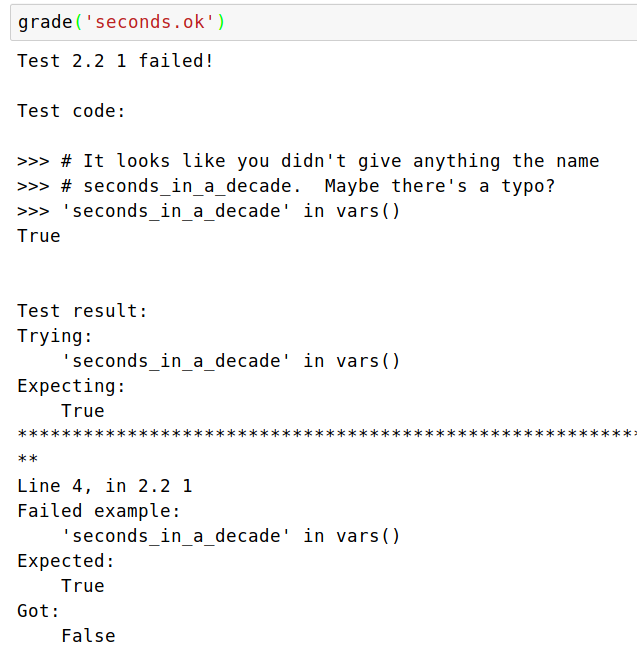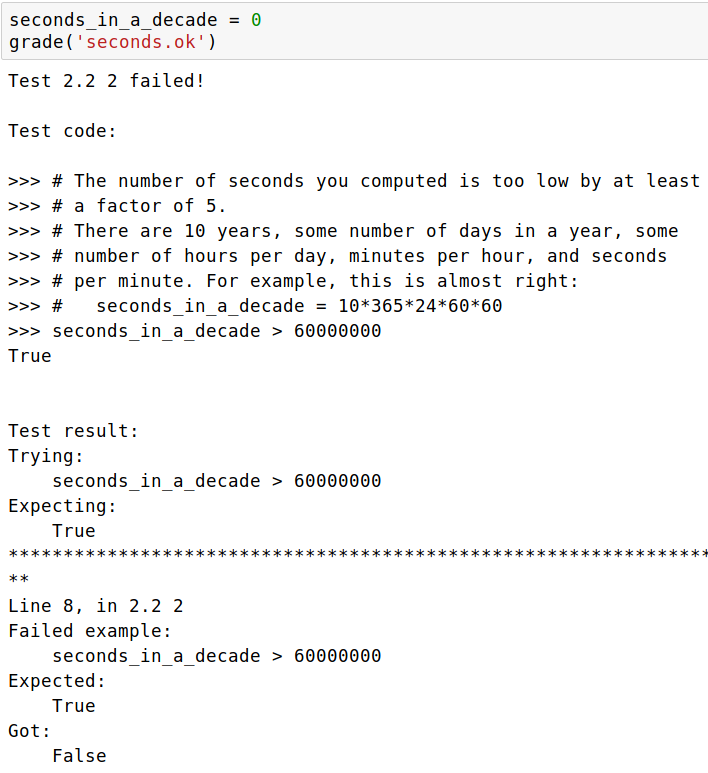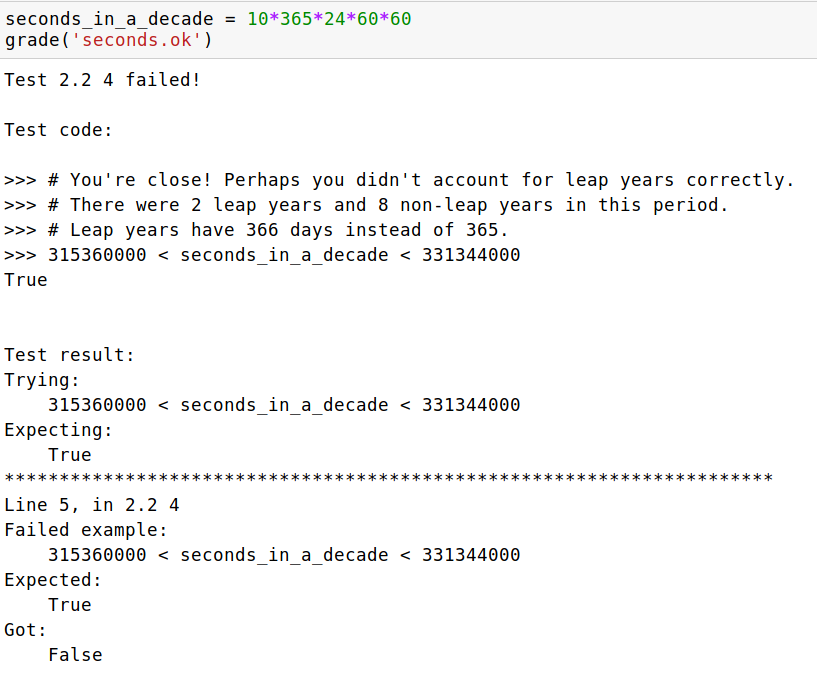Writing OK Tests
We implement a specific subset of OK Tests that instructors can write. It doesn't have all the features that okpy has, but tries to be compatible wherever possible.
An OK Test should be a valid python file that assigns a dictionary
to a global variable named test. Let's explore this more with an
example.
Structure
test = {
'name': 'some-test',
'suites': [
{
'cases': [
{
'code': r"""
>>> # This is a doctest!
>>> len(some_variable) == 4
True
"""
},
{
'code': r"""
>>> # This is another doctest.
>>> # This will run if the previous doctest passed
>>> some_variable == "yeah"
True
"""
}
]
}
]
}
Name
Name of this series of tests that is shown to students when it passes / fails.
Suites
This should always be a list with a single item. The single item must
be a dictionary with the single key cases where the value is a list of
test cases.
Each test case is a dictionary, with one key code, and the value is
a test in doctest format.
There can be any number of test cases - these will be run sequentially until
one of them fails. If all the test cases pass, a grade of 1 is assigned
for this particular oktest.
Example
Lets' walk through an example!
We want our students to find the total number of seconds in a decade &
assign it to the variable seconds_in_a_decade. We want to progressively
test this, offering clues wherever they had failed.
Here's an ok test file, with 4 test cases:
test = {
'name': '2.2',
'suites': [
{
'cases': [
{
'code': r"""
>>> # It looks like you didn't give anything the name
>>> # seconds_in_a_decade. Maybe there's a typo?
>>> 'seconds_in_a_decade' in vars()
True
"""
},
{
'code': r"""
>>> # The number of seconds you computed is too low by at least
>>> # a factor of 5.
>>> # There are 10 years, some number of days in a year, some
>>> # number of hours per day, minutes per hour, and seconds
>>> # per minute. For example, this is almost right:
>>> # seconds_in_a_decade = 10*365*24*60*60
>>> seconds_in_a_decade > 60000000
True
"""
},
{
'code': r"""
>>> # You're close! Perhaps you didn't account for leap years correctly.
>>> # There were 2 leap years and 8 non-leap years in this period.
>>> # Leap years have 366 days instead of 365.
>>> 315360000 < seconds_in_a_decade < 331344000
True
"""
},
{
'code': r"""
>>> seconds_in_a_decade == 315532800
True
"""
}
]
}
]
}
This ok test is in a file called seconds.ok.
In a Jupyter Notebook, let's try to perform this task!
First, we don't define this variable at all, and grade ourselves.

The grader runs tests sequentially, and whenever a test fails a summary about it is displayed. The very first test failed here, so it is displayed - including the comments that act as hints.

The second test has failed, and provides a hint too!
We now make an actual attempt at solving the problem, using the hint.

Very close! There's also a hint here about how we are wrong...

w00t! All of our tests have passed!